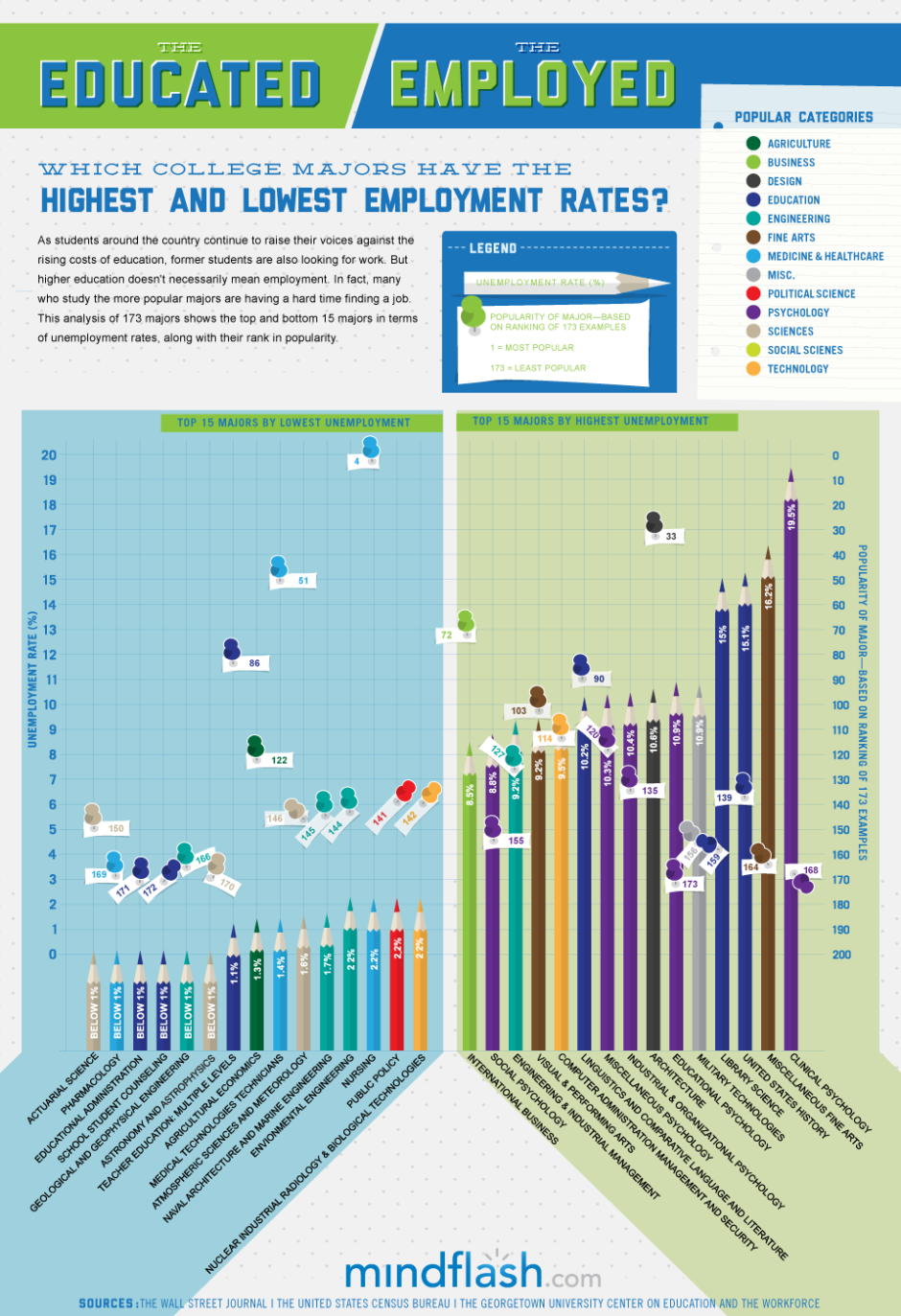Data: https://think.cs.vt.edu/corgis/csv/graduates/
Python Analysis Notebook: https://github.com/tbhlinh/tbhlinh.github.io/blob/main/pham-linh-final-project.ipynb

This scatterplot is one of the interactive visualizations I created using the graduates dataset, which contains data on graduates in the past 3 decades. It currently displays the total number of people who graduated across 47 different majors. Each major can have up to 11 points, each of which corresponds to a year. The year is indicated by color. The user can have the choice to change the y-axis to several options, including the number of females within the major, the number of minorities within the major, and the mean salary for each major. The x-axis is intentionally unchangeable, so it will always represent the same 47 majors.

Source: I created this visualization using Python. You can find it here.
This visualization also uses the graduates dataset. As shown in the interactive scatterplot, each major can have up to 11 points, each corresponding to a year. Further, every year there is an average salary for each major. In other words, each major has up to 11 average salaries for 11 different years. Each bar in the above bar graph represents the average of the 11 average salaries for each major.

Source: https://kevincorbett.com/college-majors-with-the-highest-and-lowest-employment-rates/
This visualization is based on a study of unemployment rates and popularity across 173 majors. It displays 15 top majors for the highest unemployment rates and the top 15 majors for the lowest unemployment rates. The x-axis represents the 30 majors. The y-axis represents two things: unemployment rate and popularity. The length of the pencil represents the unemployment rate; the longer the pencil, the higher the unemployment rate. The height of the pins (and the number with which they are labeled) represents the major's popularity. Although the x-axis only represents 30 majors, the scale for popularity still ranges from 1 to 173 - 1 being most popular and 173 being the least popular. In other words, the greater the ranking and the height of pin, the more popular the major.